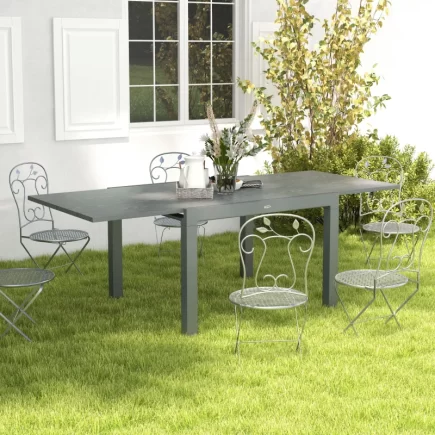Relocating a garden shed may sound intimidating, but with the right planning, tools, and knowledge, it can be a manageable and even rewarding DIY project. Whether you’re redesigning your garden, avoiding water drainage issues, or optimizing your layout, this guide provides a comprehensive overview to help you complete the move safely and efficiently.

1. Evaluating the Feasibility of Moving a Garden Shed
Consider the Shed’s Material
Different shed materials offer varying degrees of mobility. Wooden sheds are strong but heavy and may need extra bracing. Plastic sheds are light and easy to move, though they can crack. Metal sheds resist weather but are prone to warping when lifted improperly.
Evaluate the Foundation Type
Your shed’s base plays a major role in movie feasibility. Sheds resting on skids or gravel bases can usually be moved intact. However, if your shed is bolted to a concrete slab, disassembly might be necessary.
Inspect the Structural Integrity
Carefully examine the condition of your shed. Look for signs of damage such as rotting wood, rusted metal, or loose joints. If the structure is compromised, moving it might lead to further damage or even collapse.
Here’s what to check:
- Material Type:
- Wooden sheds: Sturdy but heavy; might require reinforcement.
- Plastic sheds: Lightweight, easy to move, but fragile.
- Metal sheds: Durable, though bending is a risk.
- Foundation Type:
- Sheds resting on skids or gravel bases are easier to move.
- Concrete or bolted-down sheds may require disassembly.
- Structure Condition:
- Inspect for rot, corrosion, warped frames, or structural weaknesses. A shed with extensive damage could collapse during the move or need major repairs afterward.
2. Tools & Equipment You’ll Need
Essential Tools for Every Move
Whether you’re going DIY or working with a team, some tools are indispensable for a safe and smooth shed move. High-lift jacks help raise the structure, while pipe rollers and planks allow it to glide easily. Ratchet straps or ropes secure it during movement, and a dolly or pallet jack can assist with repositioning.

Optional Equipment for Larger Moves
For more complex jobs, such as large or heavy sheds or long-distance moves, you may need trailers, tractors, or forklifts. These tools offer greater control and safety.
Tip: For one-time moves, consider renting or borrowing equipment to reduce costs.
3. Plan the Path: Terrain & Safety Checks
Clear and Inspect the Route
Walk the route thoroughly. Remove debris, trim low branches, and ensure the ground is solid. Look out for hazards like narrow gates or uneven surfaces that could obstruct the shed.
Plotting your shed’s route is critical to success. Do the following before the move:
- Walk the entire path and clear any debris.
- Trim overhanging branches and check for power lines.
- Assess the slope, width, and firmness of the ground.
If the ground is uneven or muddy, reinforce it with plywood sheets. Consider obstacles like fences or garden beds and plan how to navigate around them.
Ensure Safety at Every Step
Assess the slope and width of the terrain. Reinforce soft or muddy areas with plywood. Safety gear like gloves, steel-toed boots, and goggles is highly recommended during the moving process.
4. Prepare the Destination Site
Choose the Ideal Location
Pick a spot that offers sunlight, drainage, and access to the rest of your yard. Avoid placing the shed too close to trees, fences, or property lines.

Build a Strong Foundation
Use gravel pads for moderate support, concrete slabs for heavy-duty needs, or plastic grid bases for lightweight convenience. A level foundation keeps the shed stable and prolongs its lifespan.
A well-prepared site ensures the shed stays level and protected from the elements. Here’s how to prepare:
- Select a flat, well-drained area with ample sunlight.
- Clear vegetation and debris to prevent mold or pest infestations.
- Install a suitable foundation:
- Gravel pad with treated wood
- Concrete slab for heavy sheds
- Plastic shed bases for quick installs
5. Empty & Reinforce the Shed
Remove Contents
Take out all tools, shelves, containers, and anything else stored inside. This reduces weight and eliminates shifting contents that could damage the shed during the move.
Strengthen the Structure
Brace walls with wooden cross beams. Add temporary supports near doorways, windows, and any known weak spots to keep the shed intact during transport.
Before the move begins, it’s crucial to reduce the shed’s weight and reinforce its structure. Removing heavy items and bracing the walls will prevent unnecessary stress on the frame during transport.
6. Jack Up the Shed Safely
Positioning the Jacks

Dig shallow notches near each corner of the shed and slide the jacks underneath. Lift one corner at a time slowly and evenly to avoid twisting the frame.
Securing the Lift
Once the shed is raised, insert wood blocks or cribbing to hold it in place. Repeat the process at each corner until the structure is fully elevated and stable.
Lifting the shed off the ground must be done with care and precision. Improper lifting can lead to instability or injury. By using the correct technique and equipment, you can safely elevate your shed for relocation.
7. Move Methods
7.1Rolling on Pipes
Lay the Track
Place wooden planks along the path to serve as a stable track. Set pipe rollers under the shed, spaced evenly to support the weight.
Push and Realign
The pipe-rolling method is a classic and efficient way to move a shed across short distances. This technique minimizes friction and makes it easier to guide the shed along a predetermined path.
This classic technique works well on short, flat distances. Here’s how to do it:
- Lay wooden planks along the path as tracks.
- Place 3-4 rollers under the shed, perpendicular to the direction of movement.
- Push slowly, moving the rear roller to the front as you go.
- Adjust direction by angling the front rollers slightly.
Keep checking alignment and use helpers to guide the move from both ends.
7.2 Drag on Skids
Install the Skids
Attach 4×4 skids underneath the base of the shed. Secure them with metal brackets or screws.
Execute the Drag
Use strong chains or towing straps to connect the skids to a vehicle. Move the shed slowly across plywood or planks to minimize lawn damage.
Dragging works best on level grassy areas. Here’s the method:
- Place skids (4x4s) under the shed frame.
- Use ropes or chains to pull it with a vehicle.
- Protect your lawn with plywood sheets under the skid path.
This method is especially useful for heavy sheds and rough terrain. Avoid sudden jerks or uneven pressure.
7.3 Trailer Transport
Load the Shed
Use jacks to elevate the shed until a trailer can slide underneath. Ensure even weight distribution.
Secure and Transport
Tie the shed down with ratchet straps and protect vulnerable areas with tarps. Confirm road clearance and obtain permits if necessary before transport.
For long-distance moves or relocation that involves public roads, loading the shed onto a trailer is usually the best option. This method requires careful lifting and secure strapping to ensure safe transportation.
For moving across long distances or public roads, a trailer is often required:
- Lift the shed with jacks high enough to slide a trailer underneath.
- Strap it down securely with heavy-duty ratchet straps.
- Cover shingles and windows with tarps or boards for protection.
- Verify if a transport permit is required in your area.
8. Set the Shed in Place

Remove Support Equipment
Gently lower the shed onto its new foundation using jacks and remove all rollers or sled parts.
Finalize Placement
Check alignment with a level and secure the base with anchor brackets to ensure it won’t shift over time.
Once the shed has arrived at its new site, proper placement is key to ensure it remains level and secure. Take the time to lower it gently and confirm stability before finishing the job.
Once the shed reaches its new home, carefully perform the following steps:
- Jack it up slightly to remove rollers or sled.
- Lower the structure carefully onto its new base.
- Use a level to confirm alignment.
- Anchor the shed with brackets or tie-downs for stability.
Take your time during this step to ensure a secure and level placement that will last.
9. Inspect and Repair Post-Move
Visual Inspection
Look for any damage caused during the move. Pay special attention to roof shingles, window frames, and structural joints.
Perform Maintenance
Seal cracks, touch up paint, and replace any broken parts. Taking the time to perform minor repairs now will ensure long-term durability.
After the move is complete, perform a thorough inspection to identify any damage caused during the relocation. Addressing minor issues right away will prevent bigger problems in the future.
Make minor repairs such as sealing gaps, repainting scuffed areas, and replacing any damaged parts. A little attention now will help avoid bigger problems later.
Relocating a shed can save you time and money if the structure is in good shape. It’s a smart alternative to demolition or replacement. However, if your shed is outdated or damaged, investing in a new one could be more efficient. With careful preparation, the right tools, and safety precautions, moving your garden shed is a project you can take on confidently, and finish with pride.
Not sure whether to move or replace? Discover affordable, high-quality Sheds that suit every garden layout and budget.
FAQs
1. Do I need permission to move a shed?
In most cases, moving a shed within your own property doesn’t require a permit. However, check local building codes and homeowner association rules in case there are zoning or placement restrictions.
2. Should I empty the shed before moving it?
Yes. Remove all items to reduce weight and prevent damage to the shed structure and contents. This also makes the move safer and more manageable.
3. Can I move a shed without dismantling it?
Yes, many sheds can be moved intact using skids, rollers, or a trailer. However, older or damaged sheds might need to be partially dismantled to avoid structural issues during the move.





















